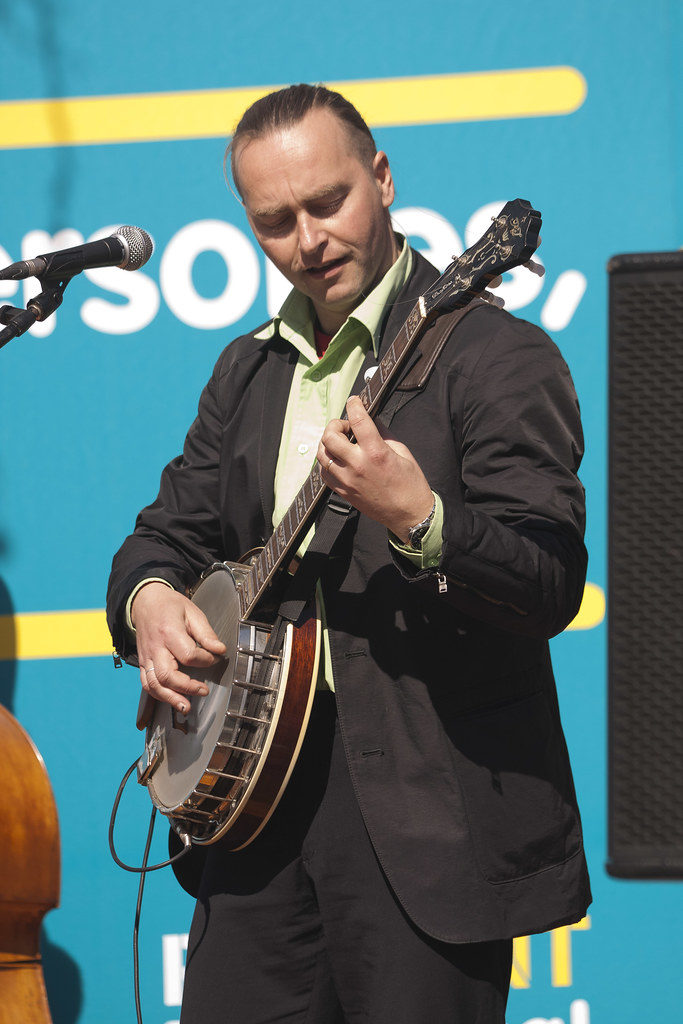Posts Tagged ‘Banjo Technique’
Excerpt – An Alexander Technique Approach to Banjo Technique (Musicians)(Psychology)(Pain)(Strain)(Injuries)(Posture)(Albuquerque)
This ebook is published on this website in a PDF format.
This ebook is also for sale on all AMAZON websites in a KINDLE format.
Located in Albuquerque, New Mexico, U.S.A. (MOVEMENT THERAPY)
I want to approach using a shoulder strap in standing and sitting from the assumption that there is a position for the banjo that is the same for the banjo in standing and sitting. There are four main points that I want to look at in this section of the ebook. They are: the instrument needs to be high enough, the instrument needs to be slightly to the right side of the torso, the right forearm placement on the instrument, and the shoulder strap on the left shoulder.
When I look at how banjo players hold their instruments in standing and sitting, the instrument is too low, and typically the instrument is held parallel to the floor. Because the banjo is usually held level, then the neck has to be too low for optimal playing, since the body of the banjo would be too high (pushing into the right arm), if the neck were to be high enough for the left hand and arm.
So, let me state this very simply. With the strap on the banjo, tilt the neck of the banjo upwards and shorten the strap, until the machine heads are at approximately center of neck height, and the body of the banjo is low enough, so that it doesn’t jam up the right arm. This is going to feel very weird for a banjo player, because this means the body of the banjo is going to sit much higher against the torso, and the neck is going to be a whole lot higher and tilted upwards.
This means you will not be doing what probably 99% of the other banjo players are doing out there. It will feel wrong because it is a very different relationship to the banjo. It will also feel wrong, because there is an image in many banjo players’ heads that says you won’t look like a banjo player, if the instrument isn’t slung low and held with the neck level or even slightly downwards.
This is fascinating for me as a classical guitar player, because if I look at what is going on in the classical guitar world, it seems most classical guitar players have gotten away from the footstool and are using everything from attachments to the guitar that raise it, to raising the guitar with a pad attached to the leg, to even using a strap and performing standing as well as sitting.
Now, let the banjo rest just against your right side, so that the instrument is slightly on a diagonal to the body and the left arm is in front of the torso, rather than to the left of the torso. With your left arm in front of your torso, there are three advantages over the banjo neck being slightly to the side of the torso. You can see the neck of the banjo without having to turn your head to the left as much and look downwards. With the neck in front of your torso, it means with your left arm in front of the body, your kinesthetic sense is more naturally accurate.
You have a more accurate sense of exactly where an arm is in space, if it is front of the body, rather than to the side. Third, you feel a sense of incredible strength and power in your left hand and arm, when you play in the first position with banjo and arm more in front of the torso. The further an arm is extended away from the torso, and especially out to the side, the weaker it is. Simply, you can support more actual weight with an arm closer to the body, rather than extended away from the body.
